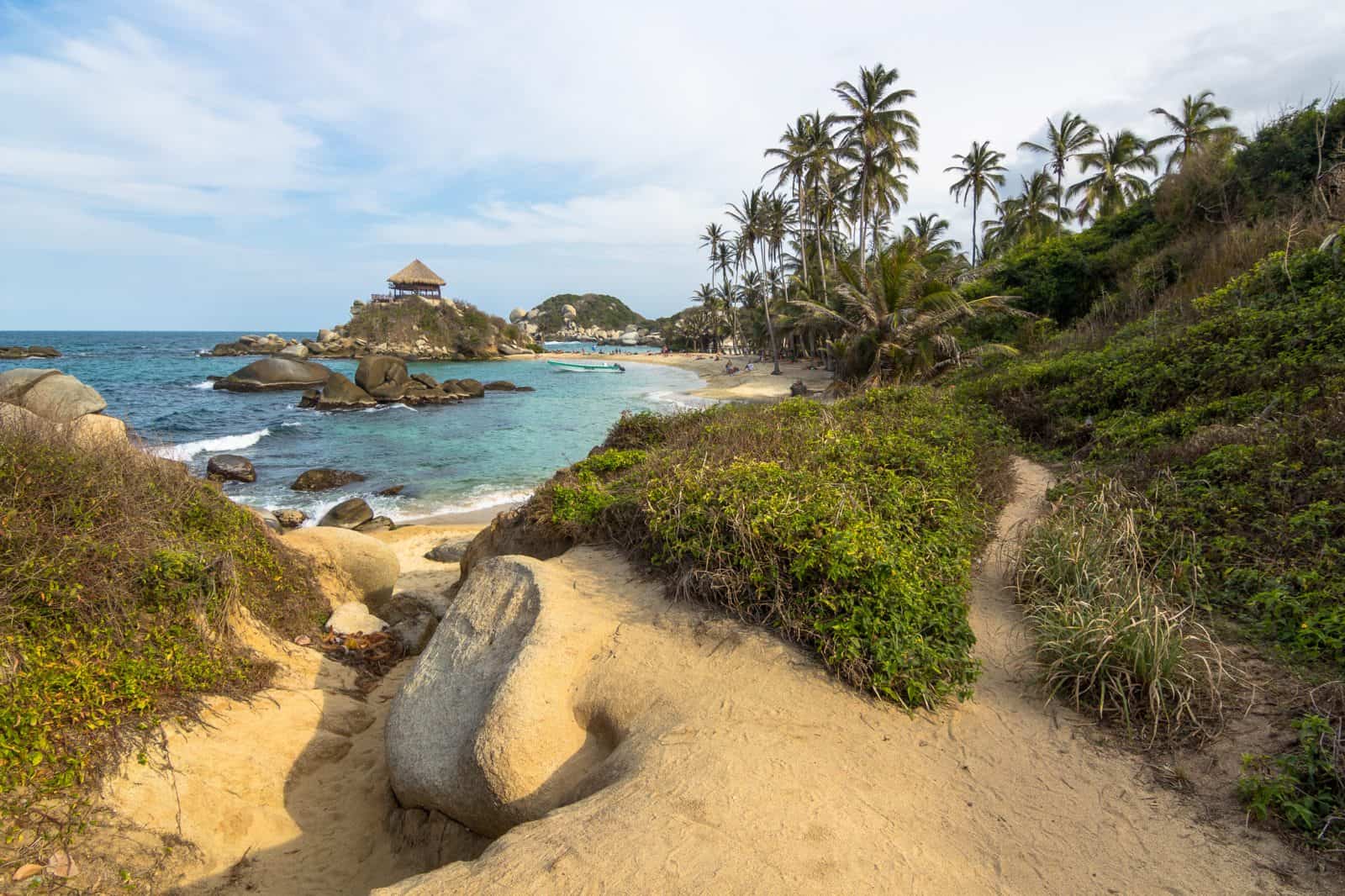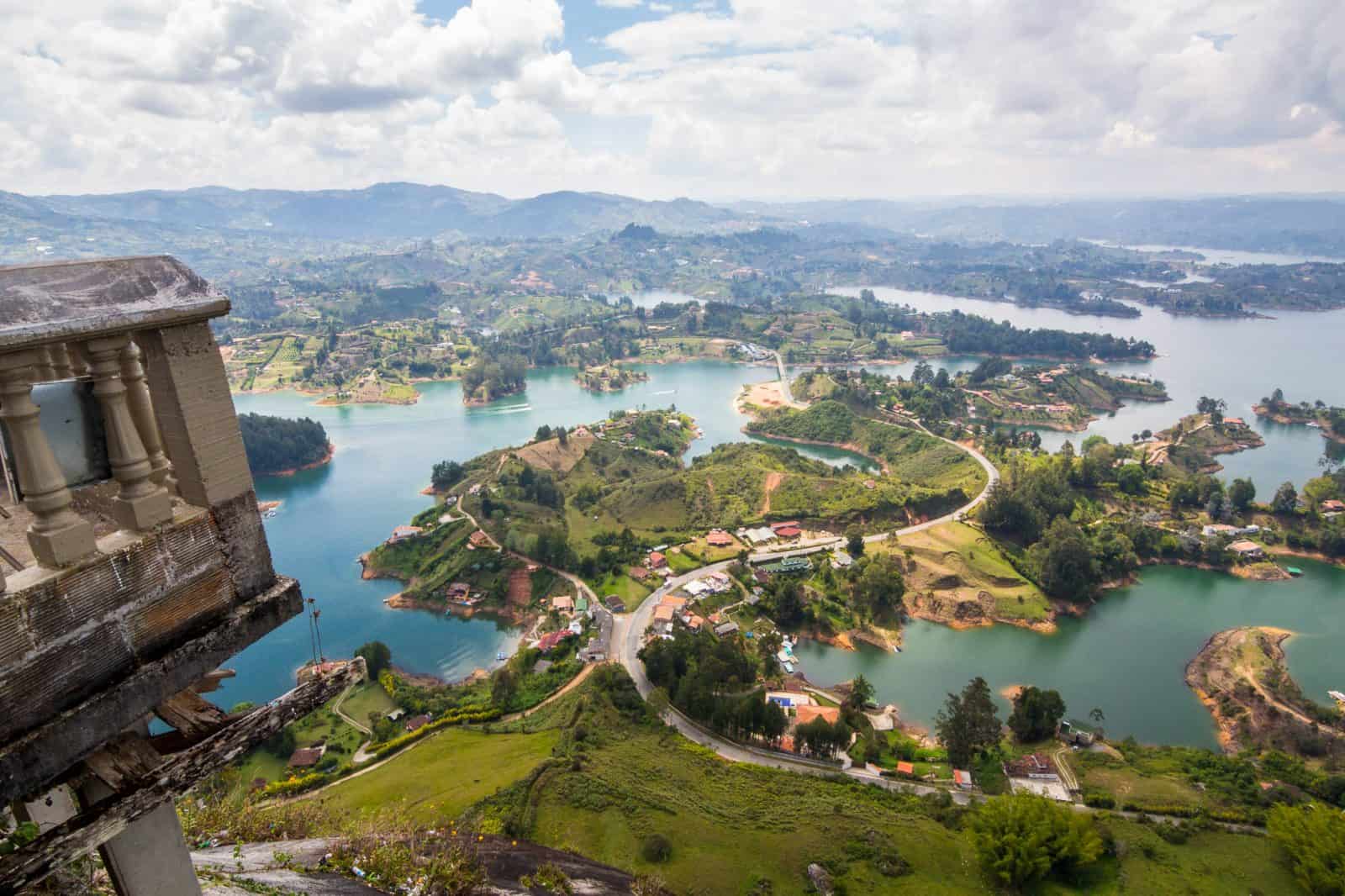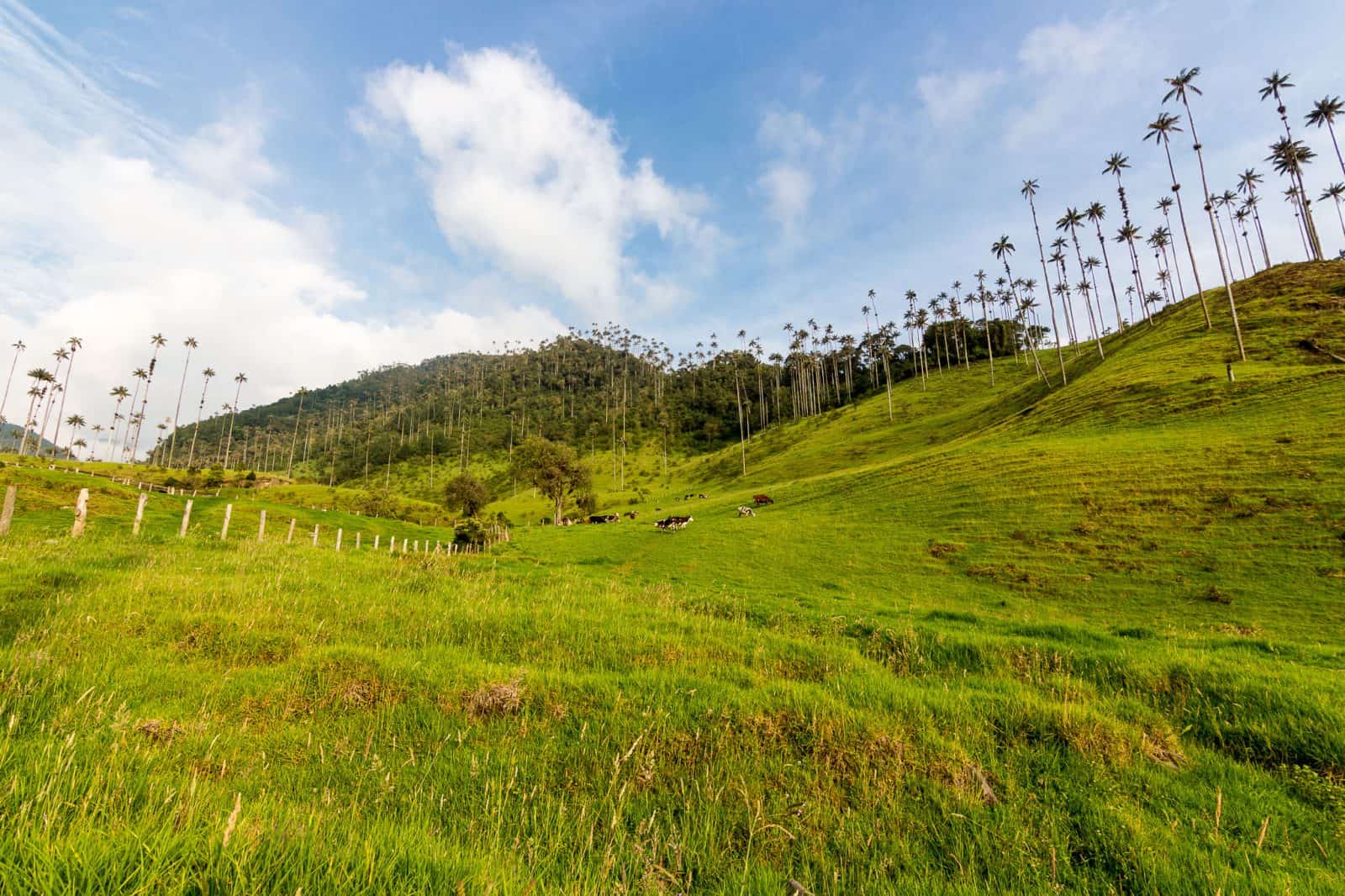
FirstGroup completes first tranche of £50m share buyback program
I recommend taking at least 1-2 weeks to visit Colombia.

FirstGroup completes first tranche of £50m share buyback program
By Will Baxley on SwimSwam

We’re now halfway through the U.S. Futures championships, and down in North Carolina, night two proved to be just as quick as night one.
Age group sensation Audrey Derivaux took the biggest spotlight of the session. The 15-year-old threw down a 59.83 in the 100 backstroke to take the win by two seconds. Derivaux joins Rylee Erisman as the only 15-16 American girls under the 1:00 barrier this season.
This marks an impressive drop for the New Jersey native, bettering her 1:00.94 best from June. However, it’s not entirely unexpected, seeing as Derivaux’s 200 best stands at 2:06.68. This bodes well for any other backstroke races Derivaux might swim this week, though her name is not on the psych sheet, so it’s not clear what her line-up is.
Derivaux was not the only event winner to crack a big barrier in Greensboro. Old Dominion University’s Zach Redding raced to a 49.90 in the 100 free earlier in the session, his first time under the coveted mark.
The University of Kentucky men proved they’ve been putting in the work this summer with another pair of victories tonight. First, Levi Sandidge followed up his mile win yesterday with a 4:16.88 400 IM victory. Then, fellow Wildcat Devin Naoroz hit angel numbers in the 100 back en route to a 55.22 victory. This marks an incredible personal best for Naoroz, undercutting the 55.93 he turned in at U.S. Nationals by nearly three quarters of a second.
Another head-turning swim came from NCAP’s Sadie Buckley in the 400 IM. Buckley busted out a 4:45.21 for a decisive win, shooting her up to #4 in the 15-16 rankings this season. It also marks a lifetime best by four seconds.
Other Event Winners
Men
Women
Read the full story on SwimSwam: Audrey Derivaux Clears 1:00 100 Back Barrier On Day 2 Of Greensboro Futures
The ruling might set a precedent to allow prosecution of other government leaders linked to atrocities.
France’s highest court is set to rule on whether it can strip the state immunity of Bashar al-Assad, the toppled Syrian leader in exile in Russia, because of the sheer brutal scale of evidence in accusations documented against him by Syrian activists and European prosecutors.
If the judges at the Cour de Cassation lift al-Assad’s immunity on Friday, it could pave the way for his trial in absentia over the use of chemical weapons in Ghouta in 2013 and Douma in 2018.
It could also set a precedent to allow the prosecution of other government leaders linked to atrocities, human rights activists and lawyers say.
Al-Assad has retained no lawyers for these charges and has denied he was behind the chemical attacks.
The opposition has long rejected al-Assad’s denial, as his forces were the only side in the ruinous, nearly 14-year civil war to possess sarin.
A ruling against al-Assad would be “a huge victory for the victims”, said Mazen Darwish, president of the Syrian Center for Media and Freedom of Expression, which collected evidence of war crimes, quoted by The Associated Press news agency.
“It is not only about Syrians; this will open the door for the victims from any country and this will be the first time that a domestic investigative judge has the right to issue an arrest warrant for a president during his rule.”
He said the ruling could enable his group to legally go after government members, like launching a money laundering case against former Syrian Central Bank governor and Minister of Economy Adib Mayaleh, whose lawyers have argued he had immunity under international law.
For more than 50 years, Syria was ruled by Hafez al-Assad and then his son, Bashar.
During the Arab Spring, rebellion broke out against their rule in 2011 across the country of 23 million, igniting a brutal civil war that killed more than half a million people, according to the the Syrian Observatory for Human Rights (SOHR). Millions more fled to Lebanon, Jordan, Turkiye and Europe.
The al-Assad dynasty also fomented sectarian tensions to stay in power, a legacy driving renewed recent violence in Syria against minority groups, despite promises that the country’s new leaders will carve out a political future for Syria that includes and represents all its communities.
As the International Criminal Court (ICC) has issued arrest warrants for leaders accused of atrocities – such as Russia’s Vladimir Putin in Ukraine, Israel’s Benjamin Netanyahu in Gaza, and Rodrigo Duterte in the Philippines – the French judges’ ruling could empower the legal framework to prosecute not just deposed and exiled leaders but those currently in power.
The Syrian government denied in 2013 that it was behind the Ghouta attack, but the United States subsequently threatened military retaliation, then settled for a deal with Moscow for al-Assad to give up his chemical weapons stockpile, opening the way for Russia to wield huge influence in the war-torn nation.
Al-Assad survived more than a decade longer, aided militarily by Russia and Iranian-aligned groups, including Hezbollah, before being overthrown by rebel groups.
Colombia is an up-and-coming destination in South America that has something to offer everybody. With a diverse range of landscapes, from stunning beaches to the snow-capped Andes, you will be hard-pressed to find somewhere else in the world quite like it. That’s why creating a comprehensive Colombia itinerary is no easy feat—especially if you only have 2 weeks!
Sure, the country has a bad rap from the days of Colombian drug lords, but those times of needing to ask yourself “is it safe?” are mostly behind this country. It’s quickly modernizing and opening its arms to the world.
So, if you are looking for a culturally rich destination with a range of jaw-dropping scenery and sprawling cities, then look no further. Here’s how to spend 2 weeks in Colombia the right way.
Colombia is a pretty big country, which means that getting around it can take some time. This is especially true because there are so many places to visit that are spread apart from one another.
That said, there are two easy ways of getting between major destinations in Colombia: bus and plane. And the good news is that plane prices are actually quite cheap. During our journey around Colombia, we found Avianca to be the most reliable and reasonably priced airline, which took us almost everywhere we wanted to go.
But if you have more time, the buses are even cheaper. You can use sites like Busbud to find buses to take you from Point A to Point B. Or you can go to any of the nearby bus stations and ask to see the schedules and prices — this is usually the most reliable way.
Colombia is actually a huge and diverse country, and there is absolutely no way you can see everything here in just 2 weeks. The following itinerary is designed to take in some of the best that the country has to offer and to show you the highlights.
Although you can certainly cram more into a 2-week trip, I would not recommend it. It is far better to spend some quality time getting to know a destination than just ticking off “must-sees” and never truly experiencing the country.
Having said all that, let’s get started in the steamy Caribbean city of Cartagena to kick off your 2 weeks in Colombia!
The colorful streets of Cartagena, ColombiaCartagena is the perfect place to arrive in Colombia because it’s easy to get around and has a lot of nearby attractions. You can combine rest and relaxation on a beach with a little nightlife and exploring in town. It’s the perfect introduction to Colombian culture.
One of the best ways to get an overview of the city is to head to Castillo de San Felipe de Barajas, which is strategically located on a hill outside of town. Of course, the Spanish built it here for that very reason, as it has a commanding view of all approaches to the city.
Next on the agenda is a walking tour of the historic Cartagena. You can always do this yourself, ticking off the items as you go, but I prefer to take the free walking tours in Colombia. They are not actually “free” as you should give a tip at the end.
However, they are run by locals, and it provides them with a job. Plus, you get real, local insider info into the city, and they’ll cover all of the highlights of the city and some places you would not normally get to see.
Some of the best beaches in the country are located up north, so Cartagena is well located to get you a little beach time. One of the most picturesque and also convenient beaches is Playa Blanca, just outside of Cartagena.
You can reach it either by boat or road. I prefer the water, as it takes just 45 minutes from the port. Otherwise, you can take local transport, but it can take at least two hours.
If there is one place to party while you are in Colombia, it’s in Cartagena. It’s renowned with both the locals and backpackers, and there are a couple of great options to live it up here.
The first is the Chiva Bus, which is quite a local thing. It includes a tour around the different barrios of the city, along with an on-board bar and musicians playing local Vallenato music.
If that doesn’t sound like your kind of thing, the other popular option is the Media Luna Hostel party, which takes place every Wednesday night.
The only way to get to Tayrona from Cartagena is by road. You will have to get on a couple of buses and make your way slowly there via Santa Marta.
Santa Marta is around four hours by bus from Cartagena, and it’s a further hour to Tayrona. If you choose, you can spend a night in Santa Marta. It is not the most stunning city to visit, but it’s a convenient spot to stop for the night, and it’s also a launching point for Minca and the famous Lost City Trek.

Cabo San Juan, Tayrona National Park, ColombiaTayrona National Park is perhaps the most popular park in Colombia, and for good reason. It combines stunning beaches, with untouched beauty—and all just a day away from Cartagena.
Tayrona is stunning and there is lots to see there, but don’t expect action-packed parties. It’s a National Park, after all.
Tayrona is one of the best places to come if you want to do some hiking in Colombia. And even if you are not normally into hiking, this is a great place to just go for a walk.
Take some time to hike to the various beaches, starting with the most popular, Cabo San Juan. But also be sure to spend some time at the less-visited ones, too. Some are not only just as picturesque, but they are often deserted, too.
This Kogi settlement is a great way to get a taste for the culture and people whose land this actually is. Of course, you will also come across some of the people when you are making your way around the park, but this is a little more special for your Colombia itinerary.
One of the best things to do while in Tayrona is to just spend a little downtime on the beaches or in your accommodation. There are few distractions in the park because there is no WiFi, no noise and it might sometimes seem like nothing to do. So, enjoy it, and catch yourself a little R&R.
There are lots of flights each day out of Santa Marta airport, and given the distance to Medellin, it’s the best option. Of course, getting to the airport can also be done a variety of ways. Some hotels and hostels offer shuttles, but the cheapest option is a colectivo bus to Santa Marta, then a taxi from downtown.
If you absolutely have to torture yourself and go by bus, it will take the best part of a day (15 to 20 hours) and might not even save you any money.

View over Guatapé, ColombiaGetting to Medellin can be done easily by internal flight from Santa Marta, and it takes just over an hour. As you land, you will see the sprawling metropolis that seems to fill every crevice and hill in this valley.
Medellin has moved on from the days of Pablo Escobar, and the people here are actually not a huge fan of his, so don’t run around asking about him. There is very little in the way of danger here, as long as you take the usual precautions of staying away from iffy areas at night and not flaunting your valuables.
There are a few things you should absolutely do here to make the most of your time in Medellin and, ultimately, to make the most of your Colombia itinerary. The first, like in Cartagena, is to take a Free Walking Tour and get to know the city as a whole, along with its sordid history.
This will not only give you a great overview of the downtown area, but it will also offer you some insider tips and knowledge, too. You also get to see some of the highlights like Botero Plaza, where you can see the fun “fat” artwork of Botero, who hails from here.
Another fun half-day (or even full-day) tour is to head out to the Metrocable that climbs slowly up and over the hills to Arvi Park. This gives you an interesting perspective into the less-well-off population of the city, as well as a spectacular view of the area.
And, the final stretch is through the middle of a quite wild park, where you can spend the whole day hiking if you wish. Or you can simply return to Medellin again.
On the other side of Medellin is Comuna 13. This was once a place you would never head as a tourist. Now, it is full of them.
You can take a tour with a local and learn all about their lives here, or simply ride the escalators to the top of this hillside community and explore the graffiti-adorned roads. You might even get lucky and see some super-talented break dancers at the top.
Guatapé is a popular side trip from Medellin for a reason. The town is located in a water-filled, picturesque region of the country and has some great activities to keep you busy for a day. It’s a must-see on your Colombia itinerary.
It takes around two hours to reach there from Medellin, so leave early and come back late if possible. You can also spend a night, but it’s not necessary.
The two main things you will want to see while you are here are the giant monolith, El Peñol (also known as the Guatape Rock), as well as the beautiful colonial town itself. The hike to the top of the Guatape Rock is a climb up 740 steps. It should only take about 15 to 20 minutes, and you’ll have spectacular views from there.
Salento is a fair distance from Medellin, so if you are pressed for time, I recommend flying, which only takes 50 minutes. However, you do not land in Salento itself, but rather the closest big city, Pereira. From here you have to either take a taxi directly or head just downtown to the bus station, and then take a bus to Salento. Direct with a taxi is around an hour; with the bus combo, it might take you two or more, depending on connections.
If you choose to take a bus to Salento directly from Medellin, just be aware that it is at least six hours over long, winding roads, which, although scenic, are super time-consuming. If you don’t want to eat that time up from your Colombia itinerary, we don’t recommend the bus journey. That said, it might save you a few dollars.

If you’re a coffee lover, Salento is the place to be!Salento is one of the premier coffee regions in Colombia, so if you are a coffee lover, you will never want to leave. It is a lush, hilly area covered with coffee plantations, as well as well-kept colonial villages like Salento and many others.
One of the best things you can do in Salento is a deep dive into the world of coffee. There are a variety of places you can do tours in the hills around town. I recommend taking as in-depth a tour as you can, as this is truly the place to see how coffee comes to your cup and explore the tastes.
The next most popular thing to do in the Salento region is to hike through the Valle de Cocora, which is peppered with the world’s tallest palm trees. There are a number of options depending on your fitness level—this Colombia itinerary is for everyone!
There is a full loop down the valley, along the river and then back via the wax palms, which is actually what people come to see. This takes around four hours. Or, you can head straight to the wax palms, which is around one and a half hours return. There are even horse rides, for those so inclined.
Although actually pretty small, it is worth spending a few hours walking around Salento and seeing it from all sides. There’s something for everyone, from the yummy fresh juice sold at the town square to the viewpoint (Mirador de Salento) to the little nightlife and local night markets on the weekends.
Again, it is far easier to get here by plane, which is only 50 minutes from Periera. Keep in mind that you will need to get to the airport again. This can add at least a few hours.
There is a day-long bus option, as well, if you want to save a little money. The journey is split in two parts. The first is a 45-minute ride to Armenia, where you then catch the Bogota bus. This can take anywhere from seven to nine hours, so many people prefer the overnight option.

Overlooking the city of Bogota.The last stop on your 2-week tour of Colombia is the capital, Bogota. The city itself is not the jewel of the Carribean like Cartagena, but there are still a few things you should see while you are here. After all, part of getting to know any country is to visit its capital city!
Unlike most other cities in Colombia, the best way to see Bogota is by bike. The tours run out of La Candelaria are the best, and they also give you a chance to explore this barrio, as well. The tours run twice a day, and they don’t require booking. They take you to all the most important landmarks, as well as the local fruit market and a few other local highlights.
To get the best views of Bogota, you absolutely have to head to Montserrat during your Colombia itinerary. You can take the easy way up via cable car or you can hike. Just be aware that there have been some reports of safety issues when hiking early or late in the day. Locals warn of robberies and attacks, but rumors abound as usual. So do your due diligence before heading up there and err on the side of caution.
Before the Spaniards came to South America and kind of “borrowed” all the gold, the continent was flush with the stuff. And, lucky for us, they have collected a lot of what was left in the fabulous Museo del Oro. It’s right in the heart of Bogota. If you have some spare time, this place is definitely worth a visit. If only to put some future jewelry on your wish list.
Colombia is actually pretty cheap, so this Colombia itinerary may even cost a lot less than 2 weeks at home for some of us. The following are some rough costs for different types of travelers:
Buses typically cost around $30 to $40 for trips between Bogota and Salento, Salento and Medellin, Cartagena and Santa Marta.
Flights typically cost between $50 and $100 depending on the airline, how far ahead you book, etc. Just be aware that the cheapest airlines like VivaAir often don’t have luggage included. So, although they look cheap, they come with more costs and often more delays than Avianca.
On the lower end of the spectrum, you can find hostel dorm beds ranging from $10-15 a night. Hostels around Colombia are pretty decent, ranging from the bare basics to more “luxury” hostels in certain cities.
Not about that hostel life? You can find private double rooms for two people ranging from between $25-50 per night in budget hotels. These won’t be five-star luxury hotels, but you’ll be comfortable and you’ll have your privacy!
If you’re on a tight budget in Colombia, you can easily eat on $10-15 per day if you stick to local family-owned restaurants and street vendors. You can find delicious street food like grilled meats and rice and bean dishes for sometimes just a few dollars. Go where the locals go!
With a bigger budget, expect to pay $20-40 per day for food. With this budget, you can pretty much eat wherever you want.
Colombia is actually quite a diverse country in terms of weather. You will need to pack for both very warm and sunny weather, as well as cooler and potentially rainy weather.
It is also a country that has a few mosquitoes, and some of them can carry disease. So you want to be prepared for that, as well, before shipping out on your Colombia itinerary.
Here’s what we recommend you pack.

In Tayrona and Cartagena, you will find some of the most spectacular beaches in Colombia. So be sure to bring your swimming gear, even if it’s only for a quick dip.
Kenny Flowers has some of the best swimwear options for both men and women, with a variety of wild colors and patterns (like cheetah print and tropical florals). If you’ve got a wild side and want to show it off, look no further.

Whether it’s to dry off after a quick dip or because you don’t like the look of that hotel towel, a microfiber towel will come in handy.
They’re fast-drying, SUPER soft, and incredibly lightweight. Microfiber towels pack up into compact pouches so that they take up virtually no space in your backpack. They’re built for adventure travelers, so you’ll have this thing for years to come.

You will be out and about every day, whether it’s in a city or hiking. So a comfortable travel daypack is an absolute must.
Our top pick for a daypack is the REI Co-op Flash 18 Pack. This daypack is the best all-around backpack for ANY type of adventure, whether you’re hiking, commuting, or just exploring a new city!
It’s practical, it’s unisex, and it comes at a great price, too.

The sun is always high overhead. So keep yourself protected at all times, especially when on the beach or hiking. A classic ball cap like the Patagonia Fitz Roy Bear Trucker Hat will do just fine. (It comes in women’s sizes too.)
But ladies, if you want something more beachy and less sporty, go with a packable shade goddess hat. The wide brim offers the ultimate sun protection, and it packs nicely in any luggage.

The Colombian sun can fry an egg at midday. So take a lot of sun protection with you and apply it liberally, especially in the middle of the day.
If you’re going to be swimming or generally enjoying Colombia’s natural beauty, we suggest TropicSport Mineral Sunscreen. It’s biodegradable and eco-friendly, and water-resistant to boot. Protect yourself AND the environment!

Something that will definitely come in handy in Bogota and Salento is a rain jacket. Keep this at the bottom of your bag.
The REI Drypoint GTX is our favorite all-around rain jacket. Why? It’s extremely breathable yet still waterproof, it has a very customizable and comfortable hood, and it’s fantastic for hiking thanks to its stretchiness.
It’s a bit boxy in shape, but it packs nicely and is light as well. And of course, there’s a version for women!

Many of the places you will be walking are hot. So, in most cases, hiking boots are not fun to wear. Grab some hiking sandals instead.
Keen is a great brand for airy, lightweight hiking sandals like the Newport H2 (available in women’s too). These sandals have excellent toe protection and they’re waterproof, so you can ford all the rivers and streams you like! Admittedly, they’re not the most attractive sandals going, but they’re more than worth your weight in gold when you’re hiking in tropical places.

DEET is one of the best ways to deter mosquitoes. And, given the potential danger in areas in the north, it’s worth taking a bottle or two. Malaria is a very real threat here, as well as the zika virus that hit the country hard in 2016.
If you are not a fan of chemicals, this mozzie repellent will keep those critters at bay.

Depending on where you’re staying, many of the higher-end places will have mosquito nets. But you can never be 100% sure, and sometimes they have holes. So always bring your own.
Not only will this help protect against diseases and viruses, but you’ll have a much more peaceful sleep if you’re not slapping away these annoying little buggers all the time.
A net will pack nicely, but keep it separate from smaller items that may get tangled up when you’re packing in a hurry.
I never go anywhere in the world without coverage from one of the best travel insurance companies, and Colombia is certainly somewhere you will want it. Whether it’s just to cover common cold medicine or to replace any stolen items, you can never be too safe. That is not to say you are going to have these things happen to you. But bad things can happen to anyone anywhere — even the most prepared person.
One of the best options for travel insurance in Colombia is World Nomads because they specialize in travel insurance and are aware of the many and varied issues we have when traveling overseas. Be sure to check them out in our full World Nomads travel insurance review.
Colombia has so much to offer that it’s hard to pick exactly where to go. But, with the above Colombia itinerary, you will get to see some of the best this country has to offer. And that’s without missing out on any of the top attractions.
With just 2 weeks in Colombia, you can go everywhere from historic towns to stunning beaches and coffee plantations to fields of towering wax palm trees. Colombia is an up-and-coming destination for a reason!
READ MORE:
I recommend taking at least 1-2 weeks to visit Colombia.
The Rosario Islands are one of the most beautiful places in Colombia.
The Caño Cristales is the top tourist attraction in Colombia.
Cartagena is a fantastic city to visit for your first time in Colombia.
Cartagena is one of the safest places to visit in Colombia.
Before the environmental impact of cement and steel was fully understood, the construction industry often erred on the side of caution—using far more material than necessary. This approach made sense at a time when legislation focused almost exclusively on safety.
“When in doubt, pour more concrete, add more steel, make it bigger than necessary,” says Jennifer Schooling, OBE and Director of the Cambridge Centre for Smart Infrastructure and Construction (CSIC). “But now, in the era of artificial intelligence, that approach is no longer acceptable.”
Environmental regulations now demand that materials with high carbon footprints be used more efficiently. The construction industry has passed that challenge on to technology providers. “We need a kind of new cyber-physical system,” says Schooling—one that connects the data-driven digital twin with physical reality. “It’s really urgent,” she adds, “because we can’t reduce carbon emissions if we don’t understand what we’re doing.”
Managing a construction project’s life cycle data is no small task. According to Schooling, one key element is the maximum threshold—a reference point from which everything else must be calculated: working times, material and equipment costs, types of components, safety systems… in short, everything tied to economic and environmental efficiency. On this basis, artificial intelligence is expected to help transform the traditional working model.
Adding to the complexity, the experience gained in recent years through Industry 4.0—especially in the use of digital twins to move from automation to autonomy and towards physical AI—cannot be applied directly to buildings and infrastructure.
Construction sites are far more variable than factories. The environment constantly changes. Concrete arrives wet and must dry. Weather forecasts may be better than before, but conditions can still delay or derail a schedule.
“When I talk to a group of engineers and tell them that data is never neutral, they look at me strangely,” says Schooling. “You might think that a bridge is neutral, but if you collect a set of data and fail to monitor the data that could cause it to collapse, it will collapse—no matter how much data you have.”
According to Autodesk Construction’s 2025 State of Design and Manufacturing Report, interest in AI has dipped slightly since the previous year, when the technology was being adopted at pace. Still, implementing AI and other emerging technologies remains the second most frequently cited challenge among industry executives. In part, the current shortage of skilled professionals—affecting nearly two-thirds of organisations—is acting as a catalyst.
Similarly, Grassi’s 2024 Conditions and Outlook Report for Construction, Architecture and Engineering notes that 62% of general contractors and 46% of subcontractors are actively considering introducing AI into their operations in the near future. This includes not only construction itself but also predictive maintenance. Here too, AI ranks as the second most important technology for investment, although full adoption could take 18 to 24 months, according to some executives.
Equally important as tracking AI’s progress in the sector is observing how it’s being implemented—a process that differs significantly from other industries. Few fields are as deeply intertwined in their creative and executional phases as construction.
Unlike the tightly controlled systems of Industry 4.0, construction work involves uncertainty and the need for adaptation—factors that open the door to new kinds of collaboration between human and artificial systems.
This is the view of architect Javier Peña Galiano, founder of Xpiral and professor of Design with Nature at the Institute for Advanced Architecture of Catalonia (IAAC). In his architectural design for the CaixaForum headquarters in Valencia, he included a 1,000-square-metre ceramic vault in the administration area. The pieces were produced by Cerámicas Cumella in Granollers (Barcelona) in twelve colours and three sizes, adding considerable variability.
Peña Galiano sees three distinct phases for applying AI in construction. In the project and design phase, it aids in conception and creation, integrating functional, figurative, metabolic and atmospheric elements into the design.
In the manufacturing phase, AI supports the production of architectural components, whether made manually, digitally or through a hybrid approach. One of its major contributions is the ability to scale processes that are currently seen as artisanal.
In the installation and execution phase, AI can support the implementation and positioning of elements on site.
In the case of the ceramic vault at CaixaForum, “a layout system was generated based on a mathematical algorithm, inspired by the movements of the person who was going to place the pieces and check that they were in the right place,” explains Peña Galiano.
This Boolean operation aimed to produce a complex surface from basic ceramic pieces. A genetic algorithm, supported by Anemone software, enabled iterative design and optimisation.
“AI has both a software and a hardware component,” says Peña Galiano. In his view, it should not be used to replace existing processes, but to achieve “something that can only be done with it. If you go to CaixaForum, you think, ‘How did they do that?’ It can only be done with these collaborative processes. It looks handmade, but it’s not possible—either because of the scale or the geometry.”
This is what sets AI in construction apart from its role in Industry 4.0.
Source:
Federal regulators on Thursday approved Paramount’s $8 billion merger with Skydance, clearing the way to close a deal that combined Hollywood glitz with political intrigue.
The stamp of approval from the Federal Communications Commission comes after months of turmoil revolving around President Donald Trump’s legal battle with “60 Minutes,” the crown jewel of Paramount-owned broadcast network CBS. With the specter of the Trump administration potentially blocking the hard-fought deal with Skydance, Paramount earlier this month agreed to pay a $16 million settlement with the president.
Critics of the settlement lambasted it as a veiled bribe to appease Trump, amid rising alarm over editorial independence overall. Further outrage also emerged after CBS said it was canceling Stephen Colbert’s “Late Show” just days after the comedian sharply criticized the parent company’s settlement on air. Paramount cited financial reasons, but big names both within and outside the company have questioned those motives.
In a statement accompanying the deal’s approval, FCC Chairman Brendan Carr hailed the merger as an opportunity to bring more balance to “once-storied” CBS.
“Americans no longer trust the legacy national news media to report fully, accurately, and fairly. It is time for a change,” Carr said.
While seeking approval, Skydance management assured regulators that it will carefully watch for any perceived biased at CBS News and hire an ombudsman to review any complaints about fairness. In a Tuesday filing, the company’s general counsel maintained that New Paramount will embody “a diversity of viewpoints across the political and ideological spectrum” — and also noted that it plans to take a “comprehensive review” of CBS to make “any necessary changes.”
The FCC approved the merger by a 2-1 vote, and the regulator who opposed it expressed disdain for how it all came together.
“After months of cowardly capitulation to this administration, Paramount finally got what it wanted,” FCC Commissioner Anna Gomez said in a statement. “Unfortunately, it is the American public who will ultimately pay the price for its actions.”
Paramount and Skydance have said they wanted to seal the deal by this September, and now appear to be on a path to make it happen by then, if not sooner.
Over the past year the merger has periodically looked like it might fall apart as the two sides haggled over terms. But the two companies finally struck an accord that valued the combined company at $28 billion, with a consortium led by the family of Skydance found David Ellison and RedBird Capital agreeing to invest $8 billion.
Signaling a shakeup would accompany the changing of the guard, Ellison stressed the need to transition into a “tech hybrid” to stay competitive in today’s entertainment landscape. That includes plans to “rebuild” the Paramount+ streaming service, among wider efforts to expand direct-to-consumer offerings in a world with more entertainment options and shorter attention spans.
Ellison, who is poised to become CEO of the restructured Paramount, is the son of Larry Ellison, technology titan and co-founder of Oracle. Besides possessing an estimated $288 billion fortune, Larry Ellison has been described as a friend by Trump.
While Paramount sweated out regulatory approval of the merger, one of TV’s best-known and longest-running programs turned into a political hot potato when Trump sued CBS over the handling of a “60 Minutes” interview with his Democratic Party opponent in last year’s presidential election, Kamala Harris. presidential nominee. Trump accused “60 Minutes” of editing the interview in a deceptive way designed to help Harris win the election. After initially demanding $10 billion in damages, Trump upped the ante to $20 billion while asserting he had suffered “mental anguish.”
The case quickly became a closely-watched test of whether a corporation would back its journalists and stand up to Trump. Editing for brevity’s sake is commonplace in TV journalism and CBS argued Trump’s claims had no merit. But reports of company executives exploring a potential settlement with Trump later piled up, particularly after Carr — appointed to lead the FCC by Trump — launched an investigation earlier this year.
By the start of July, Paramount agreed to pay Trump $16 million. The company said the money would go to Trump’s future presidential library and to pay his legal fees, but maintained that it was not apologizing or expressing regret for the story.
The settlement triggered an outcry among critics who pilloried Paramount for backing down from the legal fight to increase the chances of closing the Skydance deal. U.S. Sen. Elizabeth Warren, D-Mass, said that the deal “could be bribery in plain sight” — and called for an investigation and new rules to restrict donations to presidential libraries.
Concerns about editorial independence at CBS had piled up even in the months before the deal was announced — with Paramount overseeing “60 Minutes” stories in new ways, as well as journalists at the network expressing frustrations about the changes on an award-winning program that has been a weekly staple for nearly 57 years
In April, then-executive producer of “60 Minutes” Bill Owens resigned — noting that it had “become clear that I would not be allowed to run the show as I have always run it.” Another domino fell in May when CBS News CEO Wendy McMahon also stepped down, citing disagreements with the company “on the path forward,” amid speculation of Paramount nearing a settlement with Trump. CBS has since appointed Tanya Simon as the top producer at “60 Minutes” — elevating a respected insider in a move that could be viewed as a way to calm nerves leading up to the changes that Skydance’s Ellison is expected to make.
Thailand’s leader has said that intense fighting between Thailand and Cambodia, which has killed at least 16 people and displaced tens of thousands, could “move towards war”.
Acting Prime Minister Phumtham Wechayachai’s warning comes as fighting at a disputed border entered a second day, marking a dramatic escalation of the dispute that dates back more than a century.
In Thailand, clashes in the Ubon Ratchathani and Surin provinces wounded dozens and displaced more than 100,000 civilians. Some 1,500 families in Cambodia’s Oddar Meanchey province have been evacuated.
World leaders are calling for an immediate ceasefire.
Malaysian Prime Minister Anwar Ibrahim, who chairs the Association of South East Asian Nations or Asean, said he appealed to leaders of both countries for an immediate ceasefire.
“I welcome the positive signals and willingness shown by both Bangkok and Phnom Penh to consider this path forward,” Anwar wrote on Facebook late Thursday.
Despite Anwar’s optimism, fighting continued through the night.
Thailand says 14 civilians and one soldier have been killed so far. Provincial authorties in Cambodia said at least one civilian in Oddar Meanchey was killed.
At a sports complex which has been converted into an evacuation centre in Thailand’s Surin province, evacuees – many of them children and elderly – said they were still shaken by the rocket and artillery attacks they witnessed on Thursday.
Older evacuees who had lived through bombardments during the Cambodian Civil War of the 1980s told the BBC the recent fighting was the worst they had experienced.
The US has also called for an “immediate cessation of hostilities, protection of civilians and a peaceful resolution of the conflict”.
“We are … gravely concerned by the escalating violence along the Thailand Cambodia border, and deeply saddened by reports of harm to civilians,” State Department spokesman Tommy Pigott said at a regular media briefing.
China, which has political and strategic ties with Cambodia and Thailand, said it is “deeply concerned” over the conflict and hope both sides can resolve issues through dialogue and consultation.
Australia, the European Union and France have also called for peace.
The United Nations Security Council is expected to meet on Friday over the conflict.
In a letter to the council on Thursday, Cambodia’s Prime Minister Hun Manet had urged it to intervene to “stop Thailand’s aggression”.
Thailand and Cambodia have accused the other of firing the first shots on Thursday.
Thailand claims the clash began with Cambodia’s military deploying drones to conduct surveillance of Thai troops near the border.
Cambodia says Thai soldiers initiated the conflict when they violated a prior agreement by advancing on a Khmer-Hindu temple near the border.
The dispute between the two countries dates back to more than a hundred years ago, when the borders of the two nations were drawn after the French occupation of Cambodia.
There were sporadic clashes over the years which saw soldiers and civilians killed on both sides.
The latest tensions ramped up in May after a Cambodian soldier was killed in a clash. This plunged bilateral ties to their lowest point in more than a decade.
Additional reporting by Lulu Luo and Jonathan Head in Surin
Anthropic, the artificial intelligence company behind the chatbot Claude, has expanded its legal team as it faces two copyright lawsuits from a group of authors and music publishers.
Anthropic is preparing for a December trial in its case brought by a group of book authors, led by Paul Bartz, who sued the AI company last year over allegedly misusing their books to train its Claude AI chatbot.
On Thursday (July 17), U.S. District Judge William Alsup in San Francisco ruled that the three authors suing Anthropic can bring a class action on behalf of all U.S. writers whose works are allegedly being used by the AI company for its training. The plaintiffs have until September 1 to submit a list.
The latest action comes less than a month after Judge Alsup ruled that Anthropic’s use of copyrighted books to train AI, without explicit permission to do so, does indeed count as “fair use.”
However, the judge ruled that Anthropic’s downloading and storage of copyrighted books from shadow libraries does not qualify as fair use.
“Anthropic had no entitlement to use pirated copies for its central library. Creating a permanent, general-purpose library was not itself a fair use excusing Anthropic’s piracy,” the judge wrote in the June 23 ruling, which can be read in full here.
Meanwhile, Anthropic is also facing a separate lawsuit brought by music publishers, including Universal Music Publishing Group, Concord, and ABKCO, in 2023. The lawsuit accuses the AI firm of using copyrighted lyrics to train the Claude chatbot and alleges that Claude regurgitates copyrighted lyrics when prompted by users.
Following last week’s ruling that certified a class of potentially several million works, Anthropic has beefed up its legal defense across the two cases.
As reported by AI industry blog chatgptiseatingtheworld.com, Anthropic added two new trial teams from Morrison Foerster and WilmerHale on Thursday (July 18), including experienced trial lawyers Daralyn Durie and Louis Tompros.
“What we just witnessed on Friday is the legal equivalent of a code red,” according to the blog post. “Anthropic understands now, if it didn’t before, that the two copyright lawsuits it faces are not simply about copyright, but also about its very existence.”
In the case brought against Anthropic by the music publishers, the blog noted that “Anthropic wasted no time in adding a new law firm led by the prominent trial attorney Louis Tompros to its defense team consisting of lawyers from Latham”.
MBW has spotted documents filed with the court that correlate with this report.
An application was submitted on behalf of Louis Tompros on July 18 requesting admission to represent Anthopic in the case filed by the music publishers. It was granted on the same day.
“I expect Louis Tompros will be the lead trial attorney for Anthropic in this case,” the blog post noted.
If the court finds Anthropic liable for willful infringement, meaning it knowingly broke the law, the company could be hit with statutory damages of up to $150,000 per infringed work.
The blog’s writer believes the judge’s recent decision sets the stage for larger damages in Anthropic’s two legal cases.
“I analyzed various statutory damages scenarios a jury might award against Anthropic. They all are bad, and some, catastrophic. If the jury finds willful infringement (knowing the activity was illegal), many scenarios would surpass the total valuation of the company ($100 billion) — and put the company in an existential bind,” the writer for chatgptiseatingtheworld.com said.
“Even if Anthropic could prevail on the eventual appeal in the 9th Circuit, it might not survive until then because typically an appellant must post bond in the amount of the damages award,” they wrote.
“It’s a code red at Anthropic. The company is fighting for its very existence now,” the blog writer said.
Music Business Worldwide
The package includes radar systems, hundreds of missiles and logistical and engineering support from US personnel.
The US State Department has approved the potential sale of a surface-to-air missile package worth $4.67bn to the government of Egypt, the Pentagon has announced.
In a statement on Thursday, the Defense Security Cooperation Agency said it had agreed to a “possible Foreign Military Sale” of a National Advanced Surface-to-Air Missile System (NASAMS) package, including four AN/MPQ-64 Sentinel radar systems, hundreds of missiles, and dozens of guidance units.
NASAMS is a US- and Norwegian-developed air defence system designed to engage hostile aircraft, aerial drones, and cruise missiles.
US government employees and contractors will also provide engineering, technical and logistics support services to the Egyptian military as part of the potential deal.
“This proposed sale will support the foreign policy goals and national security objectives of the United States by improving the security of a major non-NATO ally that is a force for political stability and economic progress in the Middle East,” the Defense Security Cooperation Agency statement said, referring to Egypt.
The prime contractor will be a US multinational aerospace and defence conglomerate, RTX Corporation, located in the state of Massachusetts.
The defence agency said that it had already “delivered the required certification notifying Congress of this possible sale”.
If approved, about 26 US government employees and 34 contractors will travel to Egypt for an “extended period” in order to provide training and technical and logistics support.
Cairo, a longstanding US ally in the Middle East, has received generous defence funding from Washington since it signed a peace treaty with Israel in 1979.
But there have been indications of warming ties between Egypt and China in recent years, including the countries’ first-ever joint military drills, hosted in April and May this year.
Called the “Eagles of Civilization 2025”, the countries’ air forces conducted two weeks of training, which the Egyptian military described as part of “broader efforts to deepen defence ties with China and strengthen joint military capabilities”.
A required part of this site couldn’t load. This may be due to a browser
extension, network issues, or browser settings. Please check your
connection, disable any ad blockers, or try using a different browser.